 |
||
|
||
| ||
 The new Epson's scanner - Epson Perfection 3200 Photo - replaces the previous model 2450 Photo. What is improved? Is it worth paying more? Unfortunately, the market leaves no choice because the 2450 is a rare thing today. So, they promise 3200 x 6400 dpi, a built-in passive module for scanning transparent standard-size originals - from 35mm films to 4"x9" slides, high maximum optical density - 3.4 D, USB 2.0 Hi-Speed and IEEE1394 (Firewire). The frames for slides and negatives supplied with the scanner are made of good hard plastic and are handy in use. Flexure and Newton rings are almost excluded while rainbow patterns are possible on wide and flexible films. If you turn the film over, the defect will disappear in almost all cases but quite often it will make it more blurry. 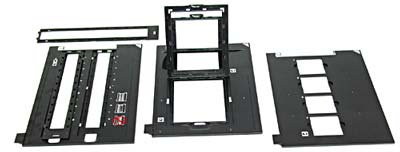 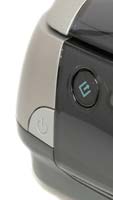 There are only two control buttons - power and start. By default the Start button is set for the EPSON Smart Panel (the program supplied), but you can choose another application. The computer controls the scanner with the standard TWAIN driver EPSON Scan. Users of Windows and Mac OS 8.6 - 9.x can open the driver from any application supporting the TWAIN standard. The scanner comes with EPSON Smart Panel and Adobe Photoshop Elements, as well as with a light version of the SilverFastSE 6. As scanning of a 16bit file is not supported, you can't scan transparent materials and should use the modest and full-featured EPSON Scan module. The scanner can work in three modes with it: Full Auto Mode, Home Mode and Professional Mode. The driver is extremely simple. You don't have to spend much time for adjusting - the image optimizers will draw the best quality from the device with so wide hardware parameters. When the maximum resolution was 600, and the density hardly reached 2 D, we had to look for programs with multipass scanning, exposure control etc. But all such measures didn't make the situation much better. And if the scanning optical and electronical parts were weak, no software could help it. Don't expect any revolutionary ideas from the new solution after Epson 2450. The maximum resolution of 1500-2000 dpi for flatbed scanners with glass and without focusing is reached already, as well as the dynamic range over 3D. The only aspect left is speed. The IEEE1394 (Firewire) has almost no advantage over the USB 2.0. But Epson says that with the IEEE1394 the Perfection 3200 Photo scanner based on the ASIC chip is almost three times faster than the previous model - Perfection 2450 Photo. In case of a 35mm film 10 frames in the burst mode are scanned via USB 1.1 during 15 minutes. Framing and tint and color correction will need more time, and scanning of the same 10 frames will last an hour. It takes 7 minutes to scan a slide of 6x6 in 3200 dpi into a 16bit file. The speed is really high even without USB2/Firewire. And the resolution of 3200 x 6400 can be achieved far not every slide scanner, especially by a universal flatbed one meant for advanced non-professionals. The speed is really important, but for a photographer who deals with films a resolution and a density range for slides and negatives supported by the scanner is of much more importance. That is why we will focus mostly on these parameters. An ordinary narrow film and a mid-class camera with a zoom-lens allow for 100 and 50 (respectively) lines per mm each. The overall resolution is defined by the formula of sum of inverse values and makes about 35 photgraphic lines, or 70 lines per mm if we count black and white lines separately. Or it makes about 1800 lines per inch. So, a non-professional photographer should have a scanner with the resolution of 1800 lines per inch. If you use a good film (for example, of the resolution of 200) and want some reserve for a sharp (reproduction) lens, you should go with 100 lines per mm and the scanner's resolution of 2500 dpi. Film scanners usually have a resolution from 2700 to 4000. Our scaner has 3200. 3200 is actually the sensor's resolution, but there is a glass and a lens before it which worsen the contrast (i.e. resolution), and, contrary to most modern film scanners, do not maintain the focusing. That is why a flatbed scanner suitable for scanning negatives and slides must have a good depth resolution - up to several mm (flexure of the film, frame) with the blur circle comparable to the resolution - 1/3200", which is impossible. To find out a real resolution of the scanner let's scan the resolution chart obtained with a reflex camera on the Mikrat-200 film in high resolution. We will scan the Mikrat negative with the emulsion above and below and compare the result with what we could get with the Nikon 8000ED at 4000 dpi. 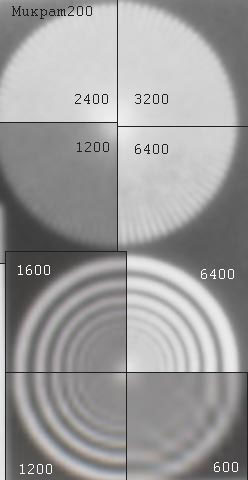 The fragments of the shots for different scanning resolutions are reduced in the Photoshop to the scan size at 6400 dpi. As you can see, scanning at the resolution over 1600 dpi (for the circular resolution chart) is excesive. So, the scanner's effectiveness is about 2 sensors per line. It's possible to estimate more precisely this parameter with the radial chart, which gives us 1.6-1.7 sensors per line, which is equivalent to the resolution of almost 2000 dpi. For comparison look at the scan made with the emulsion turned over and one more made with the Nikon 8000: 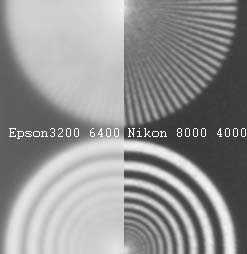 It's obvious that it looks better without the autofocus and additional diffusing glass. When the negative is turned over, the resolution gets lower on the Epson 3600 as compared with the fragment above, and the Epson 3600 is far away from the Nikon 8000. 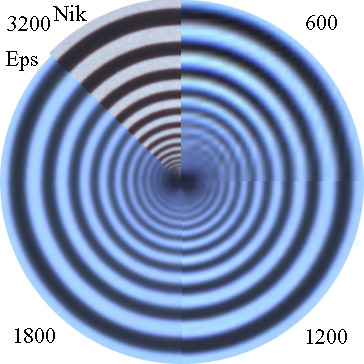 These are the fragments for the Kodak slide film combined in Photoshop. The scanning resolutions are given in dpi. The blue tint are the Epson's scans, and the neutral one is for the Nikon 8000. The resolution of 1800 is the maximum for Epson, but the Nikon 8000 can have a couple of the chart lines more. That is why it's justified to use a real slide scanner for ordinary films. And it's also obvious that there isn't much advantage over the scanner with the actual resolution of 1200 dpi. For estimation of the depth resolution we scanned a paper print with black and white stripes (0.25 mm wide). The strip was folded at the angle of 90 degrees and the resultant isosceles triangle was put int the scanner. It's clear that the sharpness edge visible on the scan (measured from the triangle's edge) equals the depth resolution. 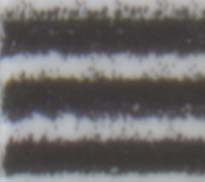 Strip's fragment. 3200 dpi. The printer's dots are well seen.
So, for the frame's center and the blur ring of 0.25 mm the depth resolution is 24 mm and for 1/2000" (or 0.013 mm) it's close to 1.2 mm. In the glassless frame it is close to possible distortions. The specified dynamic range of 3.4D is really close to this value, and in case of scanning 11 transparent neutral filters of the density of 2 (overall density of 3.3 D) it's easy to read the writing on the lower filter, with noise being not great. 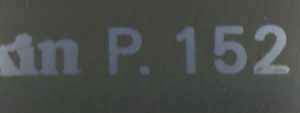 When scanning the slides the histogram has a sharp BORDER=1 in the shadows, but such dynamic range is enough for the negatives developed the standard way. The EPSON Scan program accuratly turns a negative into a positive. Here is a smaller copy and fragment 1:1 for the negative's scan for the Epson (2400 dpi) and Nikon 8000 (4000 dpi): 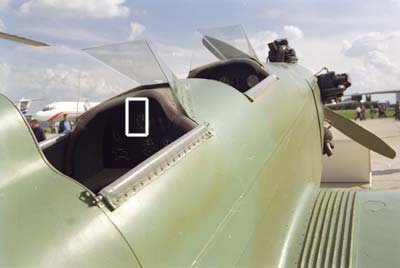 Reduced shot (35mm nagtive).
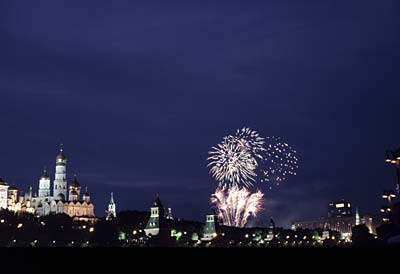 Epson Perfection 3200 Photo, 6*9 cm slide. 3200 dpi, 48bit color depth, 443MB size, scanning time via USB1 - 10 min. 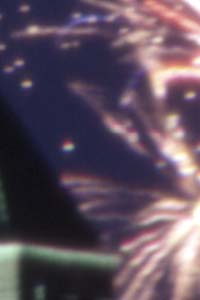
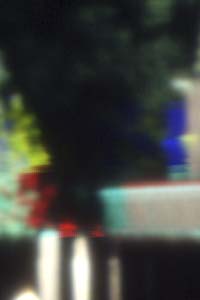 And its fragments 1:1. Without the power stabilizer it can have color horizontal stripes. 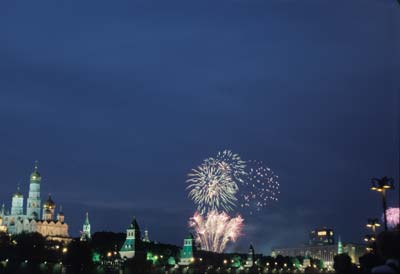 Nikon 8000, 6*9 cm. 4000 dpi, 48bit color depth, 611MB size, scanning time via IEEE1394 (Firewire) - 6 min. 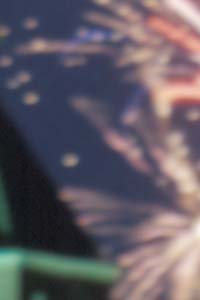 And its fragments 1:1. In this case the exposure is long, the Epson's wide slide can replace even Nikon. The Epson Perfection 3200 Photo is a good competitor in price and scanning quality for film solutions. The resolution of 3200 dpi is excessive until there is glass and focus adjustment is impossible. We compared it with expensive professional scanner Nikon 8000, and this single fact shows how high-grade this flastbed model is. Although it has inferior resolution and no hardware realization of automatic film defects removment, it is six times cheaper and remains a flatbed solution. And its real resolution of 1800 - 2000 dpi is enough for ordinary cameras and films. Specification:
Sergei Sherbakov (sherbakovs@ixbt.com)
Write a comment below. No registration needed!
|
Platform · Video · Multimedia · Mobile · Other || About us & Privacy policy · Twitter · Facebook Copyright © Byrds Research & Publishing, Ltd., 1997–2011. All rights reserved. |